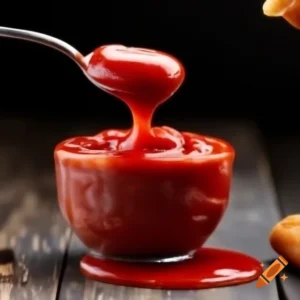Ever had a sauce so wealthy in convention, history, and flavor that it tells a story with each nibble? That’s Wojapi for youa Local American berry sauce that’s sweet, thick, and pressed with social profundity. Let’s plunge into this lovely mix of nature, convention, and taste.
What is Wojapi Sauce?
Wojapi (articulated wo-jah-pee) could be a thick berry sauce established in Local American, particularly Lakota and Dakota, culinary convention. It’s made by stewing wild berries often chokecherries into a tasty, syrupy charm. Envision a natural product stick, but with more soul, and without the pectin or additives.
A See into Local American Cuisine
Inborn cooking isn’t close to food; it’s almost narrating, recuperating, and association to the arrive. Each fixing encompasses a reason, and Wojapi stands as one of the sparkling illustrations.
Wojapi’s Put in Tribal Conventions
Served amid powwows, family get-togethers, and otherworldly ceremonies, Wojapi isn’t fair delicious it’s sacrosanct. It’s frequently matched with broil bread, another Local staple, and served as a consolation nourishment with a wealthy past.
The History Behind Wojapi
From Wild Berries to Cultural Identity
Wojapi dates back centuries. Tribes would gather seasonal berries and simmer them over open flames. These were moments of unity—grandmothers teaching grandkids, families working together. The sauce became more than food; it became heritage.
Oral Tradition and Recipes Passed Down
There’s no “one way” to make Wojapi. Recipes are passed down orally, tweaked slightly by each generation. One family may prefer it thinner; another, almost jam-like. That’s the beauty—there’s flexibility, but always the heart remains the same.
Ingredients That Make Wojapi Magical
Traditional Berries Used
At the heart of Wojapi lies its berries—wild, native, and naturally sweet.
Chokecherries: The Classic Choice
Marginally tart, profound purple, and full of cancer prevention agents, chokecherries are frequently the go-to. Their sharp tang balances out beautifully once cooked down.
Buffalo Berries, Blueberries, and More
Depending on the region and season, you’ll also find buffalo berries, serviceberries, elderberries, and even blueberries used. Each brings a different twist to the taste.
Modern Substitutes and Variations
Can’t find wild chokecherries? No worries. Blueberries, strawberries, or blackberries from your local store work too. Just keep it natural—skip the corn syrup, and embrace real fruit.
How to Make Authentic Wojapi Sauce
Alright, apron on? Let’s get saucy.
Traditional Method
Gather fresh or frozen native berries.
Add a bit of water and let them simmer in a pot.
Stir constantly until the berries burst and the mix thickens.
Sweeten to taste with honey or maple syrup (traditional tribes didn’t use processed sugar).
Simple. Beautiful. Heartfelt.
Quick and Easy Home Version
Pressed for time? Try this:
2 cups of blueberries (or your fave berries)
½ cup of water
2 tbsp of honey or agave
Simmer for 10-15 mins, mash, and boom—Wojapi.

Taste Profile: What Does Wojapi Taste Like?
Imagine biting into a wild berry pie—but without the crust.It’s wealthy, tart, marginally sweet, and features a profundity that waits. It’s not overpoweringly sugary, which makes it incredible as both a sweet and savory expansion.
Creative Ways to Use Wojapi
This sauce isn’t just for traditional tables—it can rock your modern kitchen, too.
As a Dessert Sauce
Sprinkle it on vanilla ice cream, cheesecake, hotcakes, or indeed waffles.Think of it like berry compote’s wise ancestor.
Wojapi and Fry Bread—A Classic Pair
This is the iconic combo. Fry bread’s crispy, doughy goodness with warm Wojapi on top? Pure bliss. It’s like the PB&J of the prairie.
Savory Applications You Didn’t Expect
Wojapi on roasted meats? Yes, if you don’t mind. Its tanginess cuts through wealthy flavors, making it a idealize coat for turkey, pork, or indeed tofu.
Wellbeing Benefits of Wojapi
It’s not fair tasty it’s great for you!
Dietary Control of Local Berries
Wild berries are stacked with cancer prevention agents, fiber, and vitamins. They bolster insusceptibility, progress absorption, and are extraordinary for heart wellbeing.
Characteristic Sweeteners Over Prepared Sugar
Numerous Wojapi formulas utilize nectar or maple syrup rather than refined sugar, making it a more astute alternative for those observing their sugar admissions.
Cultural Respect and Representation
Sharing the Flavor Without Appropriation
It’s awesome to love Wojapi—but let’s respect its roots. When serving or sharing this dish, credit the Indigenous communities who’ve cherished it for generations. Better yet, support Native-owned businesses and learn from Indigenous chefs.
Where to Find or Buy Wojapi Today
Look for it at Native American markets, cultural festivals, or through online stores run by Indigenous creators. If you’re lucky enough to attend a powwow, chances are you’ll find it served fresh.
Final Thoughts
Wojapi isn’t just a sauce—it’s a symbol. Of resilience. The identity. The love passed from hand to hand across generations.Whether you’re attempting it for the primary time or making it from scratch, you’re tasting history in each nibble.
So go ahead get a spoonful, and let that sweet convention move on your tongue.
FAQs About Wojapi Sauce
1. Can I freeze Wojapi?
Absolutely! Just store it in an airtight container. It keeps well for up to 3 months.
2. Is Wojapi vegan?
Yup-just adhere with plant-based sweeteners like agave or maple syrup.
3. What’s the contrast between Wojapi and berry stick?
Jam usually includes pectin and lots of sugar. Wojapi is simpler, thicker, and less processed.
4. Can I use dried berries?
You’ll be! able Fair splash them in warm water to begin with to rehydrate some time recently cooking.
5. Where can I taste traditional Wojapi?
Your best bet is a Native-run restaurant, cultural center, or a powwow event. You’ll get the real deal made with love.

